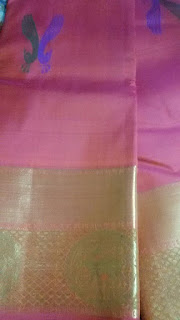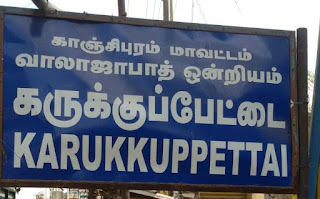Curiosity increased by searching a fascinating place to visit on a hot humid day in the month of May. As per our prior planning, we landed at Bhubaneswar on the morning of 23rd May 2018 from Puri. It was compulsion inside our mind to use the time in a proper way not to waste more. Our destination was Hirapur, a small village which is situated 20km south-east of Bhubaneswar. Though I heard a little about Hirapur and its significance, we moved through Tankapani road and slowly entered into a narrow road, from where the sight of the village scene attracted our interest in enjoying more. A quite silent place with greenery all around with big mango, coconut trees. Mahamaya pond is the center of attraction for visitors like us. Once reached there the beauty of the place made us speechless for a moment. The serenity of the place is mesmerizing to each and every one. Luckily, no other devotees or visitors were visible except us. Once entered inside the temple the priest came to near us and chatted for few minutes and spoke about the temples past history.
Odisha is a land of so many temples with great architectural style. Hirapur is famous for its Yogini Temple which is one of the best self-preserved temples of the yogini cult. It was said that once Odisha was famous for its Shakti cult and the practice of Tantrik at the premises of temples. But the existence of open roof temple of Mahamaya Temple at Hirapur gives the best example of the prevalence of Tantrik Temple at Odisha.
The name Chausanth Yogini is proved by representing 64 yogini idols at the temple. Now, there are only 63 idols remained in the temple. The yogini idols are representing a female figurine standing on an animal, demon, or a human head depicting the victory of Shakti. The Idol express everything from rage, sadness, pleasure, joy, desire, and happiness. The circular architectural style indicates a distinct from other temples of Odisha.
This temple was built by the Queen Hiradevi of Brahma Dynasty of Odisha during the 9th century. It is believed that the village name Hirapur was named around the temple on the name of Queen Hiradevi. She was the staunch believer of Shakti cult. A square mandap is still there in the center of the temple where the tantriks have practiced the sacrifice of animals in front of the idols. Now, govt has banned this practices.
Mahamaya is standing at the center of all idols who has 10 bhujas and standing at the lotus flower. Devotees are applying turmeric,
vermilion, and flowers to the idols. The application of all these materials on the idols are affected a lot. The distinct part of all idols is Ganeshani and Chamundi.
The size and the artistic view of all idols at the temples create an innumerable question regarding its history. Now, ASI has taken for its maintenance. So many tourists are coming to watch the rare beauty of yogini temple of Odisha. By spending few minutes there the thought of past came into our mind what would be the plethora of surroundings of the temple on the heyday of that time. The last looks we took while returning back from there and impressed a lot by chatting with the locals about the importance of that temple. Felt very great by visiting a rare historical temple and very advisable to everyone to visit there at least once to enjoy the beauty of the temple.
Odisha is a land of so many temples with great architectural style. Hirapur is famous for its Yogini Temple which is one of the best self-preserved temples of the yogini cult. It was said that once Odisha was famous for its Shakti cult and the practice of Tantrik at the premises of temples. But the existence of open roof temple of Mahamaya Temple at Hirapur gives the best example of the prevalence of Tantrik Temple at Odisha.
The name Chausanth Yogini is proved by representing 64 yogini idols at the temple. Now, there are only 63 idols remained in the temple. The yogini idols are representing a female figurine standing on an animal, demon, or a human head depicting the victory of Shakti. The Idol express everything from rage, sadness, pleasure, joy, desire, and happiness. The circular architectural style indicates a distinct from other temples of Odisha.
This temple was built by the Queen Hiradevi of Brahma Dynasty of Odisha during the 9th century. It is believed that the village name Hirapur was named around the temple on the name of Queen Hiradevi. She was the staunch believer of Shakti cult. A square mandap is still there in the center of the temple where the tantriks have practiced the sacrifice of animals in front of the idols. Now, govt has banned this practices.
Mahamaya is standing at the center of all idols who has 10 bhujas and standing at the lotus flower. Devotees are applying turmeric,
vermilion, and flowers to the idols. The application of all these materials on the idols are affected a lot. The distinct part of all idols is Ganeshani and Chamundi.
The size and the artistic view of all idols at the temples create an innumerable question regarding its history. Now, ASI has taken for its maintenance. So many tourists are coming to watch the rare beauty of yogini temple of Odisha. By spending few minutes there the thought of past came into our mind what would be the plethora of surroundings of the temple on the heyday of that time. The last looks we took while returning back from there and impressed a lot by chatting with the locals about the importance of that temple. Felt very great by visiting a rare historical temple and very advisable to everyone to visit there at least once to enjoy the beauty of the temple.




















































